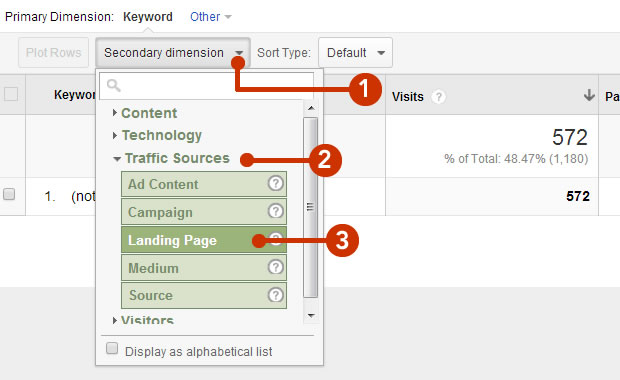Unlock Deeper Insights With Additional Dimension in Google Analytics
With the large area of information readily available in Google Analytics, the usage of second measurements can considerably enrich your analytical abilities. These additional layers of information use a nuanced point of view that can brighten complex details within your main metrics. By tactically including additional dimensions right into your evaluation, you can discover important insights that may or else stay undiscovered. The ability to translate and divide customer habits with better accuracy opens a world of possibilities for maximizing strategies and boosting efficiency.
Understanding Primary Vs. Second Measurements
When assessing information in Google Analytics, it is necessary to compare primary and second dimensions to get deeper insights right into individual behavior. Primary measurements are the major classifications whereby you can see your data, such as source/medium, touchdown, or device web page. These dimensions supply the fundamental structure for arranging and comprehending your data. On the other hand, second measurements permit you to additional dissect your key measurement information. By including an additional measurement, you can layer on extra details to your key measurement, enabling a more granular evaluation. If your primary measurement is the source/medium with which customers arrived on your website, adding an additional dimension like geographical location can reveal where those users are located geographically. This included layer of information can help you determine trends, patterns, or anomalies that may not have been noticeable when considering the primary dimension alone. Consequently, leveraging both secondary and primary measurements in Google Analytics is crucial for thorough data analysis and notified decision-making.
Using Secondary Measurements Properly
By integrating second dimensions along with main measurements, experts and online marketers can delve much deeper into the specifics of customer communications on their sites. Second measurements enable customers to segment and filter primary measurement data better, offering an extra in-depth sight of user interactions, behaviors, and demographics.
In addition, additional measurements make it possible for users to contrast and contrast different data factors within a single report, assisting in an extra comprehensive evaluation of customer behavior patterns. By leveraging second measurements efficiently, organizations can reveal surprise understandings, maximize their advertising strategies, and enhance the general user experience on their web sites.
Exploring Typical Secondary Dimension Combinations
To even more assess individual habits and trends in Google Analytics, it is important to discover common mixes of secondary dimensions. Some usual second measurement mixes that offer beneficial insights consist of analyzing website traffic sources with customer places to comprehend where internet site visitors are coming from geographically and just how they found the site. Taking a look at individual actions metrics with second measurements such as rate of interests have a peek at this website or demographics can help in targeting details target market segments more effectively.
Using Second Dimension in Customized News
Using second dimensions in custom records permits a more comprehensive evaluation of data in Google Analytics, improving the depth of understandings obtained. When creating custom-made records in Google Analytics, including secondary dimensions can give an extra comprehensive view of exactly how various measurements connect with each various other. This feature allows users to delve much deeper right into their information and reveal beneficial relationships that might not be quickly evident.
By applying secondary measurements in custom records, individuals can get a much better understanding of their site or app web traffic. Integrating the main measurement of "source/medium" with the second measurement of "touchdown page" can reveal which touchdown pages are executing best for traffic coming from details resources. This insight can aid online marketers optimize their projects and boost overall conversion prices.

Enhancing Data Visualization With Additional Dimension
When discovering data in Google Analytics custom reports, including second dimensions not only offers a more thorough analysis yet also improves the graph of understandings with data visualization. By including a second measurement to your reports, you can enhance the means information exists, making it simpler to determine patterns, patterns, and relationships within your view it website's efficiency metrics.
Additional dimensions can aid you sector your information additionally, enabling a deeper understanding of customer behavior and communications on your site. When attempting to separate certain variables that may affect your internet site's performance., this boosted level of granularity can be specifically useful.

Verdict
To conclude, leveraging secondary dimensions in Google Analytics enables for a more extensive analysis of information, bring about deeper insights and even more enlightened decision-making. Secondary Dimension in Google Analytics. By adding additional layers of details to primary data sets, experts and marketing experts can reveal hidden patterns, patterns, and connections that offer a granular view of individual habits and communications. This boosted level of insight makes it possible for optimization of projects and tailored methods for particular target market sections, eventually enhancing efficiency and conversion prices
On the other hand, secondary measurements permit you to additional study your key dimension information. By including a secondary dimension, you can layer on additional information to your key measurement, making it possible for an extra granular analysis. If your key measurement is the source/medium with which users got here on your site, adding an additional dimension like geographical location can disclose where those users are situated geographically. By integrating secondary measurements along with primary measurements, online marketers and analysts can delve much deeper right into the specifics of user communications on their sites. Secondary measurements allow customers to section and filter primary dimension information even more, providing a more detailed sight of individual demographics, communications, and behaviors.